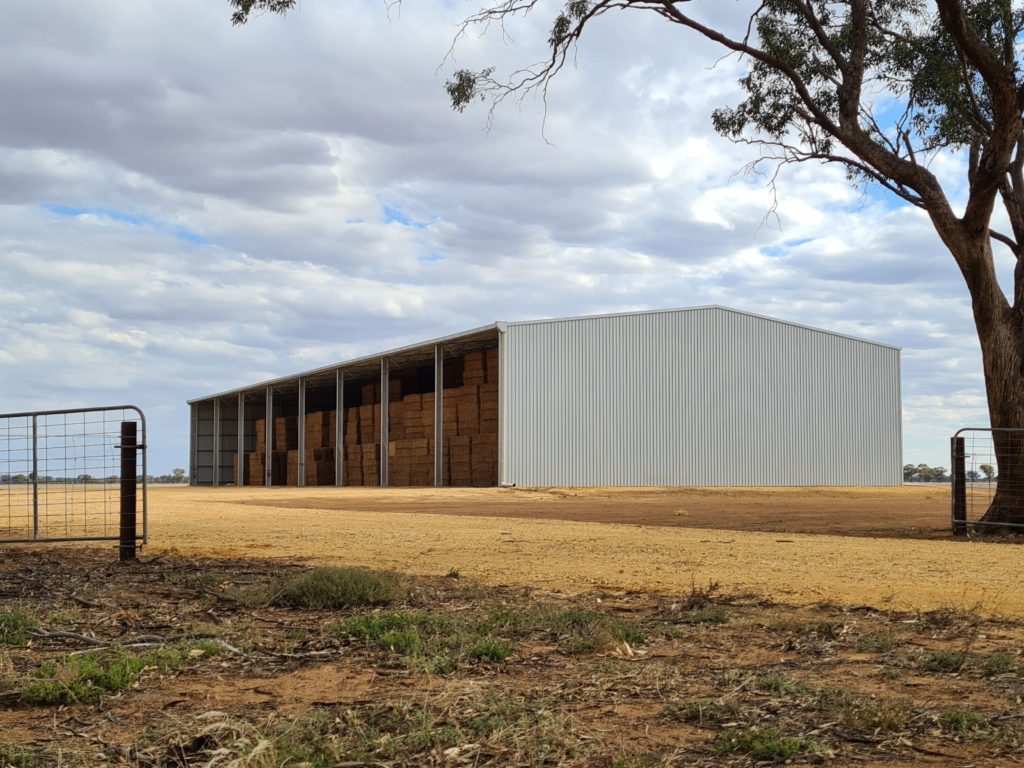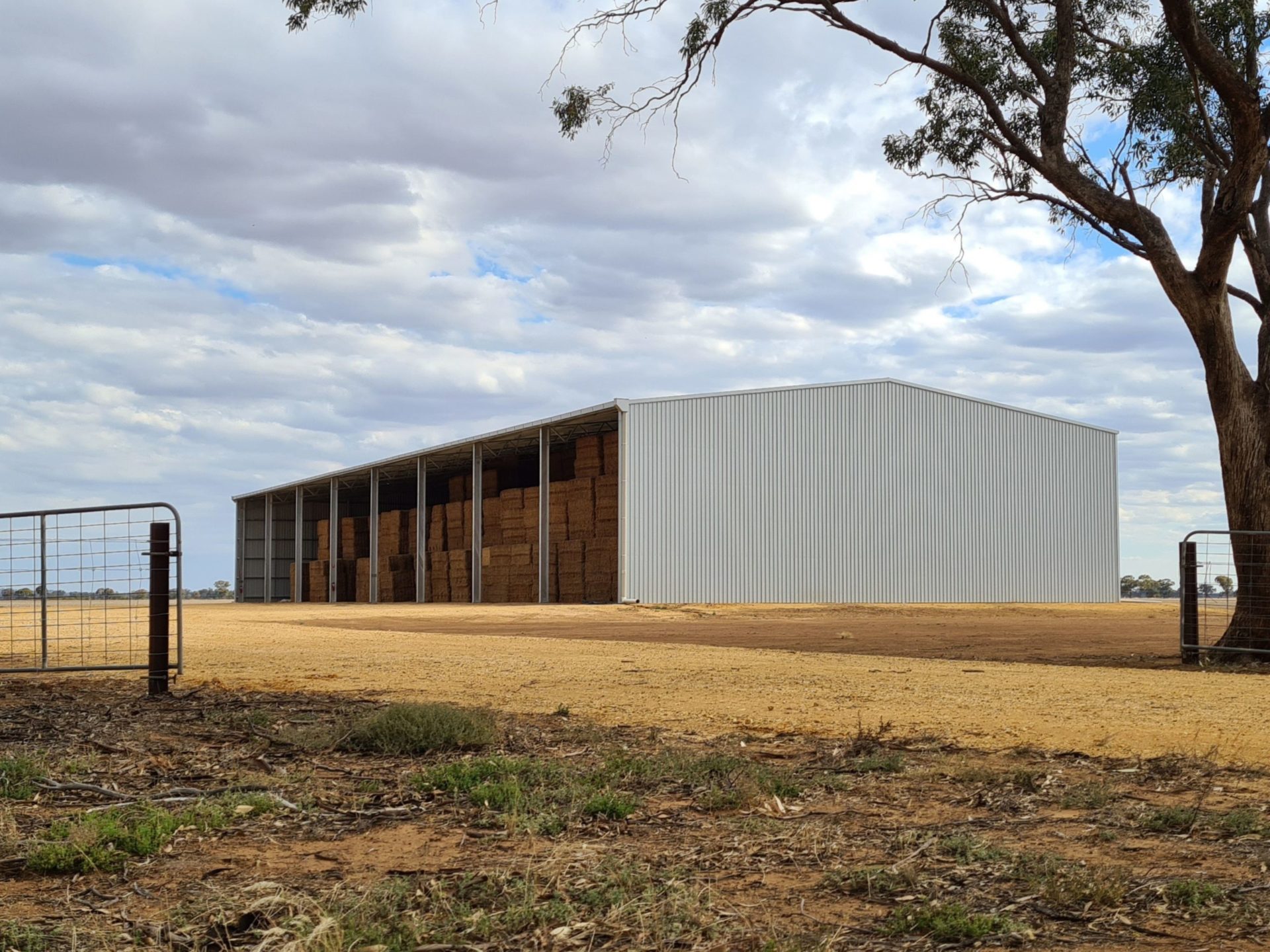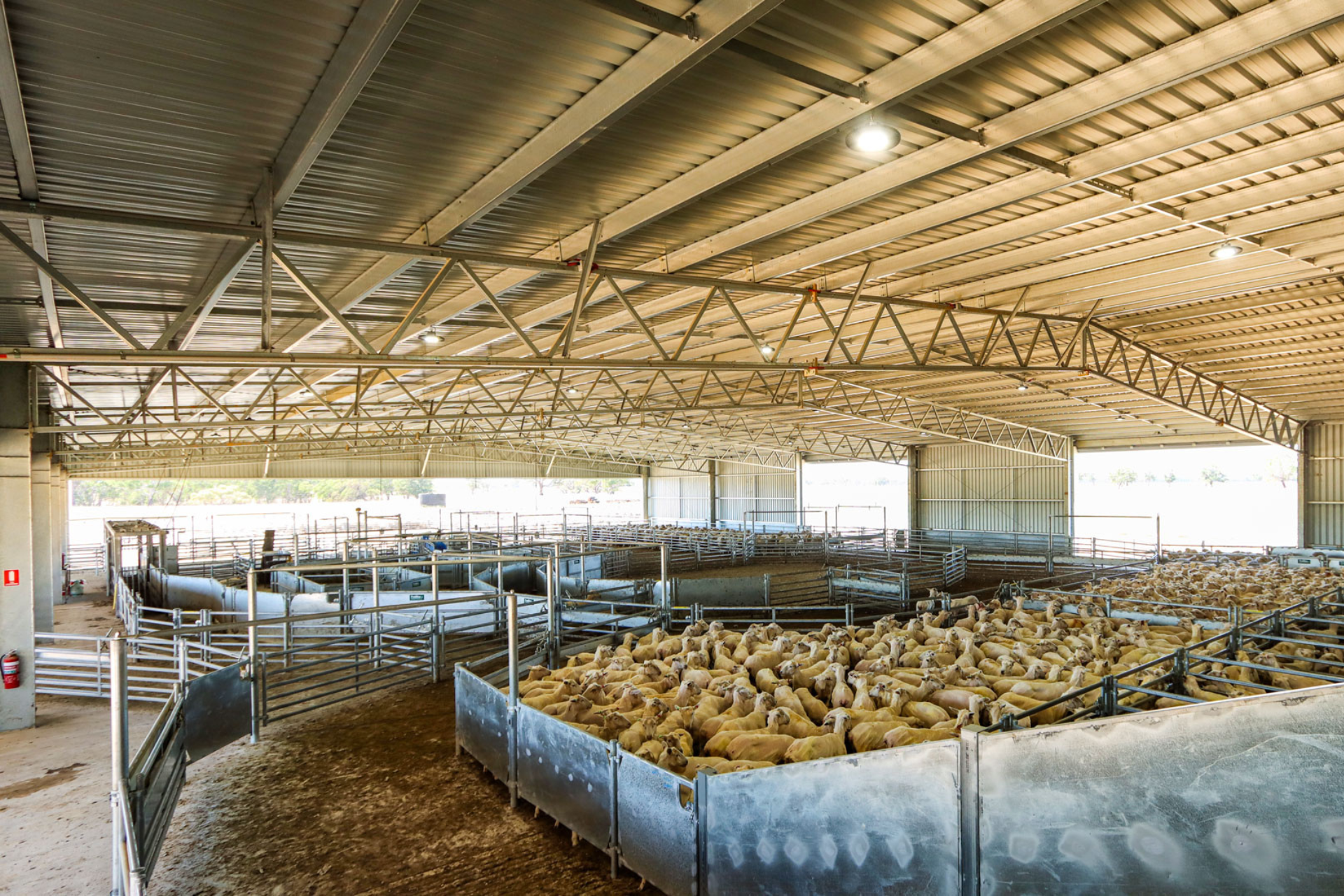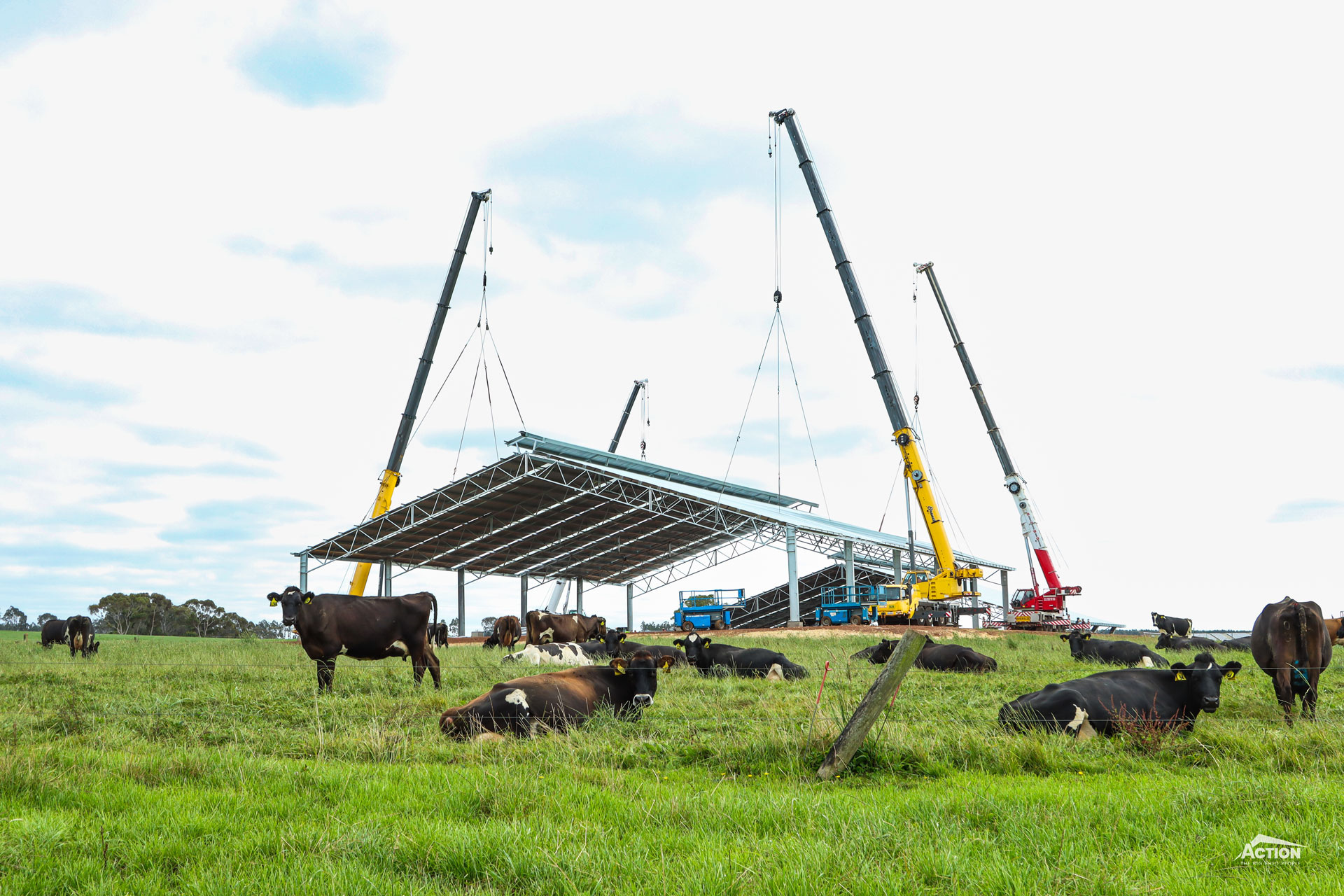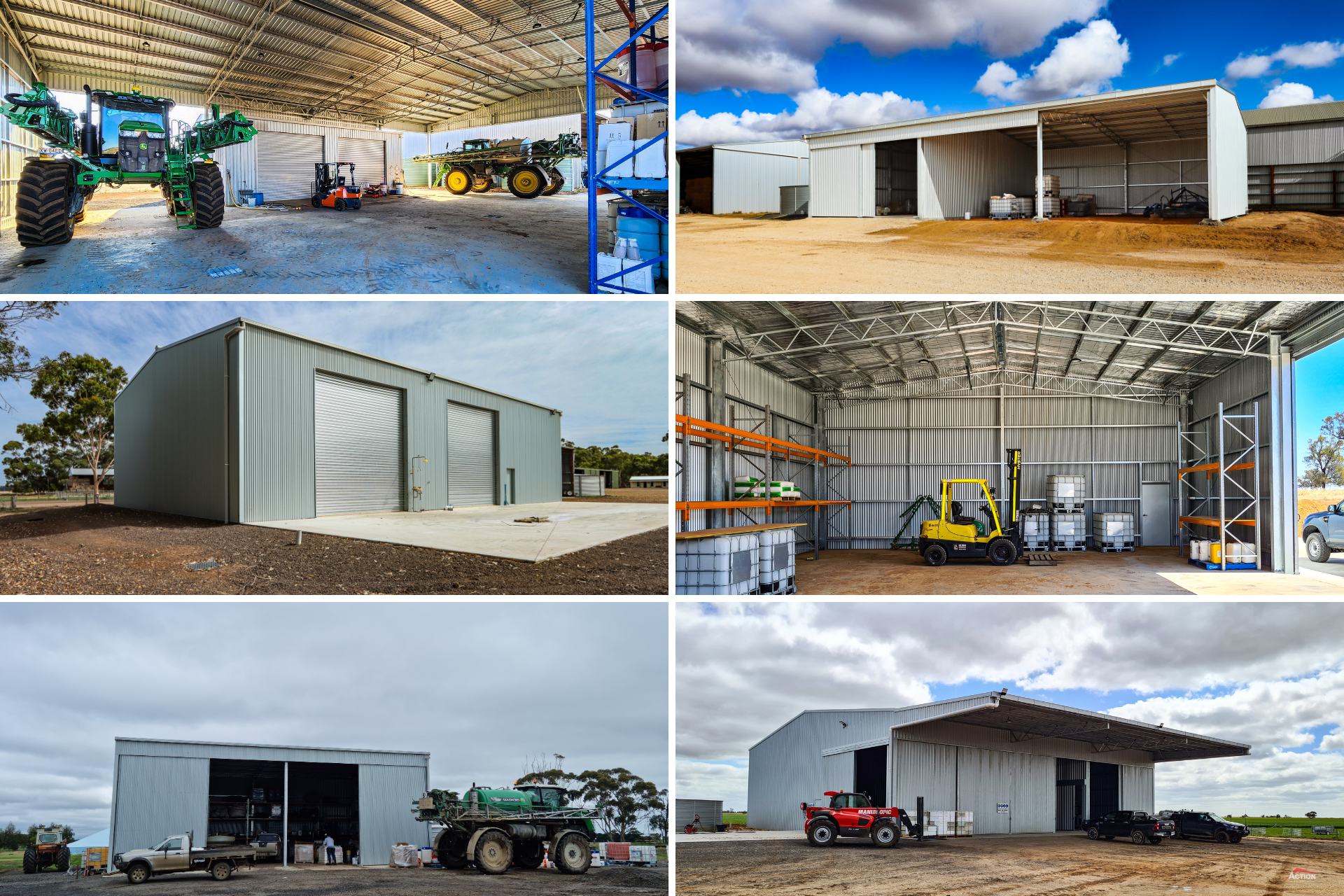Whether you’re growing and baling your own hay or buying it in, proper storage is crucial.
Here are five rules to follow when it comes to storing your hay.
Keep your hay protected in a shed
- The best way to keep your hay in good condition is to protect it from the elements; primarily, sun, excessive wind, and rain. Exposure to all three can lower the nutritional quality of your feed, as well as posing other hazards.
- The best option for hay storage is a dedicated hay shed, facing east. A canopy can also provide extra protection from the prevailing weather.
- Hay shed kits come in a range of different sizes and configurations, so talk to our building consultants about the amount of hay you need to store. We can look at multiple different options to ensure the length/width/height is providing the best value – we’ll also break-down our costings to a ‘cost per bale’ figure, to determine what configuration will work out the most cost-effective for you.
Make sure your shed is properly ventilated
- You need good ventilation wherever or however you store your hay to ensure that you prevent any build-up of moisture, which can cause a fire due to spontaneous combustion of the hay.
Stack to allow for airflow
- Don’t pack your stack of bales too tight as you need to allow good airflow in order to prevent moisture building up and causing mould or temperature increases. If you’re not storing your hay in a shed with proper flooring, get your bales off the ground on pallets or something similar.
- 8 metre – 8.5 metre bay spacings are generally the best option for your hay shed as they allow for three big square bales (or five round bales) to be stacked between each column while still providing effective air movement around the bales.
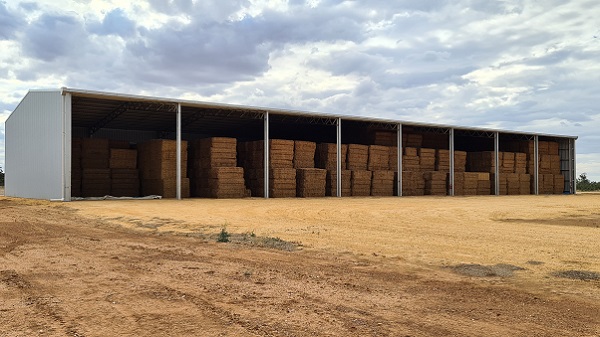
Monitor for mould
- Mouldy hay is a problem not only because stock will often reject it as feed, but it can also cause respiratory disorders in both stock and the people handling it. It’s something you need to monitor so that you can remove any bales that are mouldy to make sure the mould doesn’t spread into the stack.
Only store hay in your hay sheds
- Don’t store pesticides or other farm chemicals in your hay shed. They’re a fire risk in themselves, as well as being a potential accelerant should the stack combust.
- Likewise, avoid storing your machinery in with your hay. WFI recommends removing all machinery from your hay shed “to ensure equipment is not put at risk by fire and therefore increasing your loss and potential hardship.”
In our drought-prone climate, hay is a valuable resource that helps guarantee your stock from one season to the next. It makes good sense to invest in a dedicated hay storage shed to ensure that this resource is properly protected
